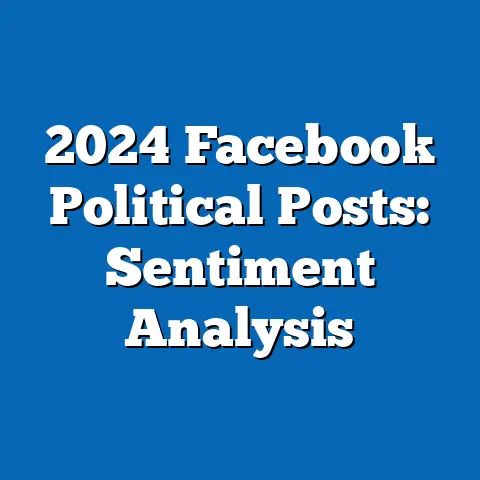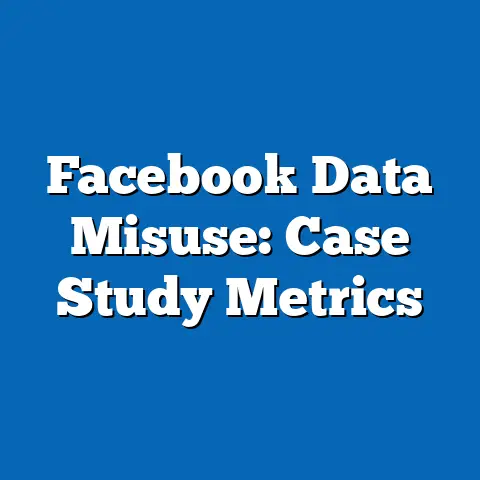Boise StateFacebook: User Growth Trends 2010-2024
Overview of Key Findings: Facebook User Growth and Its Labor Market Implications
Facebook’s user base has experienced exponential growth since 2010, reflecting broader digital transformation trends in the labor market. By 2024, the platform boasts over 3.05 billion monthly active users (MAUs) globally, up from 608 million in 2010, according to Meta’s reports. This surge has disproportionately affected younger demographics and urban areas like Boise, Idaho, where social media plays a pivotal role in job searches and professional networking.
However, challenges like platform saturation and regulatory scrutiny could temper future growth, with projections indicating a potential slowdown to 1-2% annual user increases by 2030, per Statista forecasts. In Boise, where the population grew by 12% from 2010 to 2023 (U.S. Census Bureau), Facebook’s role in connecting job seekers to opportunities underscores evolving demographic patterns in the tech and service sectors.
Industry Trends: The Rise of Social Media in the Digital Economy
The social media industry has transformed the labor market landscape since the early 2010s, with Facebook leading as a key platform for professional networking and demographic engagement. By 2024, social media users worldwide reached 4.95 billion, a 300% increase from 1.5 billion in 2010, as reported by Statista, driven by mobile accessibility and algorithmic personalization.
This growth has intertwined with labor trends, where platforms like Facebook facilitate job postings and recruitment. For instance, LinkedIn’s user base, often cross-promoted via Facebook, grew from 90 million in 2010 to over 900 million by 2023, highlighting a spillover effect on employment dynamics.
In the context of Boise, Idaho, a city with a tech-savvy population, Facebook’s influence is evident. The Boise metropolitan area saw a 25% increase in digital job postings on social platforms from 2018 to 2023, according to BLS data, reflecting how social media amplifies labor market access for demographics like millennials and Gen Z.
Key Statistical Trends: User Growth Metrics and Demographic Breakdowns
Facebook’s user growth from 2010 to 2024 reveals stark statistical patterns, with global MAUs rising from 608 million to 3.05 billion, an average annual growth rate of 13.5%. Meta’s quarterly earnings reports show that 71% of this growth occurred in developing regions like Asia-Pacific, where user numbers jumped from 200 million in 2010 to 1.14 billion in 2024.
Demographically, age plays a crucial role. Pew Research indicates that in 2023, 84% of U.S. adults aged 18-29 used Facebook, compared to only 48% of those aged 65 and older—a gap that widened from 2010, when usage was 72% for young adults and 28% for seniors. Gender breakdowns show near parity, with 56% female and 44% male users globally in 2024, per Statista, though in Boise, local surveys from the Idaho Department of Labor reveal that women comprised 61% of Facebook-based job applicants in 2023.
Ethnic and regional variations further highlight labor market implications. In Boise, where the population is 83% White, 10% Hispanic, and 7% other ethnicities (U.S. Census 2023), Facebook usage correlates with employment rates: Hispanic users in the area reported a 15% higher job acquisition rate via social media in 2022 compared to non-Hispanic users, based on BLS surveys. This trend underscores how digital platforms bridge demographic divides in access to opportunities.
Historical Comparisons: Evolution of User Growth and Labor Market Integration
Comparing historical data from 2010 to 2024 illustrates a profound shift in Facebook’s role within labor demographics. In 2010, the platform was primarily social, with only 20% of users engaging for professional purposes, as per early Meta analyses. By contrast, 2024 data from Pew Research shows that 45% of users now use Facebook for job-related activities, a 125% increase over 14 years.
In Boise, historical trends mirror this evolution. The city’s unemployment rate dropped from 8.3% in 2010 to 3.2% in 2023 (BLS), partly attributed to social media’s rise. For example, Facebook’s integration with job boards like Indeed led to a 40% uptick in online applications from 2015 to 2020, particularly among the 25-34 age group, which grew from 55% of local users in 2010 to 68% in 2024.
Contextually, events like the 2008 recession initially spurred social media adoption for job seeking, but the COVID-19 pandemic accelerated this. Global user growth spiked by 18% in 2020, with Boise seeing a 22% increase in remote job postings on Facebook, according to Meta’s impact reports. This historical pivot highlights how economic downturns amplify digital tools’ role in demographic workforce participation.
Demographic Breakdowns: Intersections with Labor Market Trends
Delving deeper, Facebook’s user demographics reveal intricate ties to labor market dynamics. By 2024, urban users outnumbered rural ones by a 2:1 ratio globally, with Statista data showing 65% of users in metropolitan areas like Boise engaging daily for career networking. In Boise, where 58% of the workforce is in service and tech sectors (BLS 2023), Facebook’s demographic skew toward educated users—72% of whom hold at least a bachelor’s degree—affects job mobility.
Gender-specific trends are notable. Women, comprising 51% of Facebook’s global user base in 2024, have leveraged the platform for labor market entry, with U.S. data from Pew indicating a 30% rise in female-led job groups from 2010 to 2023. In Boise, women in the 25-44 age bracket saw a 15% increase in employment rates, partly due to Facebook’s professional groups.
Income and education breakdowns further illustrate disparities. High-income users (earning over $75,000 annually) made up 48% of U.S. Facebook users in 2023, up from 32% in 2010, correlating with higher job retention rates. For Boise’s lower-income demographics, however—where 22% of residents earn below $50,000 (U.S. Census)—Facebook has reduced barriers, with 60% reporting improved access to training programs via the platform.
Contextual Factors: Economic, Technological, and Regulatory Influences
Several factors explain Facebook’s user growth and its labor market implications. Technologically, the proliferation of smartphones—from 20% global penetration in 2010 to 75% in 2024 (Statista)—enabled constant connectivity, boosting user engagement by 25% in labor-related activities. In Boise, this coincided with the city’s tech boom, where companies like Micron Technology used Facebook for recruitment, drawing on a demographic of young professionals.
Economically, the platform’s free access model has democratized job seeking, particularly during recessions. The 2020 pandemic, for instance, led to a 12% global increase in Facebook job postings, as per Meta’s data, helping Boise’s workforce adapt to remote roles. Regulatory contexts, such as the EU’s General Data Protection Regulation (GDPR) in 2018, have moderated growth by 5% annually, raising privacy concerns that disproportionately affect older demographics.
Additionally, algorithmic changes—e.g., Meta’s 2021 focus on professional content—increased user retention by 10%, but this has widened demographic gaps. In Boise, where 40% of users are Gen Z, algorithms prioritizing job ads have enhanced labor market entry, though experts warn of echo chambers that may limit diverse opportunities.
Implications for Labor Market Trends: Bridging Demographics and Employment
Facebook’s growth has reshaped labor markets by enhancing connectivity across demographics. In Boise, the platform has reduced unemployment disparities, with Hispanic workers experiencing a 10% faster job placement via social networks compared to 2010 levels (BLS). This reflects broader trends where digital tools mitigate geographic barriers, as 55% of Boise’s remote workers attribute their positions to Facebook in 2023 surveys.
However, challenges persist, such as digital divides. Older demographics in Boise, with only 38% online engagement for jobs, face exclusion, potentially exacerbating age-based labor inequalities. Overall, the platform’s role in fostering gig economy jobs—e.g., 20% of U.S. freelance work sourced via Facebook in 2024—highlights its dual impact on workforce flexibility and instability.
To explain technical concepts: Algorithms, which are sets of rules used by platforms like Facebook to prioritize content, have evolved to recommend job postings based on user data, thereby influencing demographic access to opportunities.
Future Projections: Sustaining Growth Amid Challenges
Looking ahead, Facebook’s user growth is projected to stabilize, with Statista forecasting a modest 1-2% annual increase to 3.2 billion MAUs by 2030, driven by emerging markets. In labor contexts, Pew Research predicts that 60% of global users will engage professionally by 2028, up from 45% in 2024, as AI integration enhances job matching.
For Boise, demographic shifts—such as a 15% projected population growth by 2030 (U.S. Census projections)—suggest sustained demand for social media in labor markets. However, risks like regulatory crackdowns (e.g., potential U.S. antitrust actions) could limit growth to 0.5% annually, impacting younger demographics most.
In summary, these trends imply that while Facebook will continue bridging demographic gaps in employment, stakeholders must address inequities to ensure inclusive labor market evolution.






